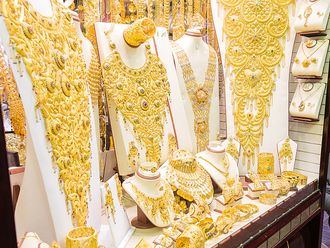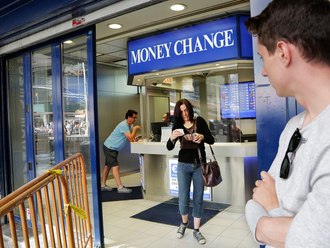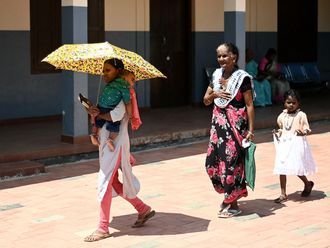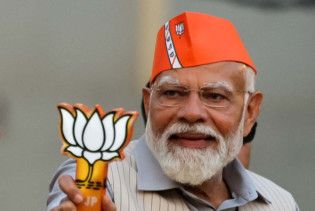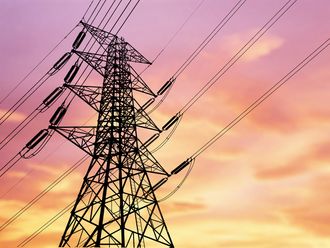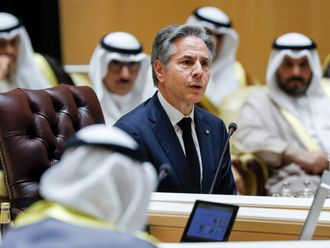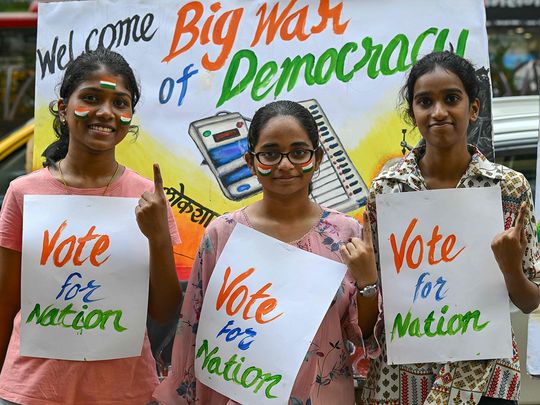
The world’s biggest election will begin in India on Friday when nearly a billion eligible voters cast their ballot to decide who will fill the 543 seats of the Lok Sabha, the lower house of Parliament.
From April 19 to June 1, 969 million Indians — or over 10% of the global population — will vote in the general elections.
The exercise is the biggest anywhere in the world and will take place over 44 days. Results will be announced on June 4.
WHY DOES IT TAKE SO LONG?
The sheer size of India and the level of logistics needed to ensure that every registered voter is able to cast the ballot means polling is spread out across many weeks.
Over the years, the duration of voting has differed.
It took nearly four months to complete the vote in India’s first elections in 1951-1952, after it gained independence from British rule, and just four days in 1980.
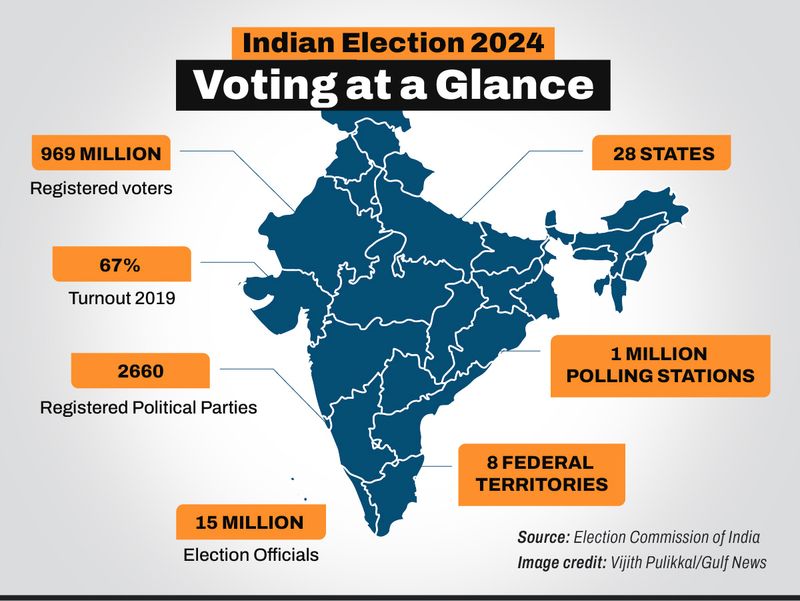
In 2019, voting took 39 days, and this year’s election is the second longest.
With 969 million registered voters, the size of India’s electorate is bigger than the combined population of the European Union.
Of these, 497 million are men and 471 million women.
WHEN WILL VOTING TAKE PLACE?
This time the vote to choose 543 lawmakers to the lower house of Parliament takes place over seven phases.
India’s 28 states and eight union territories will vote at different times.
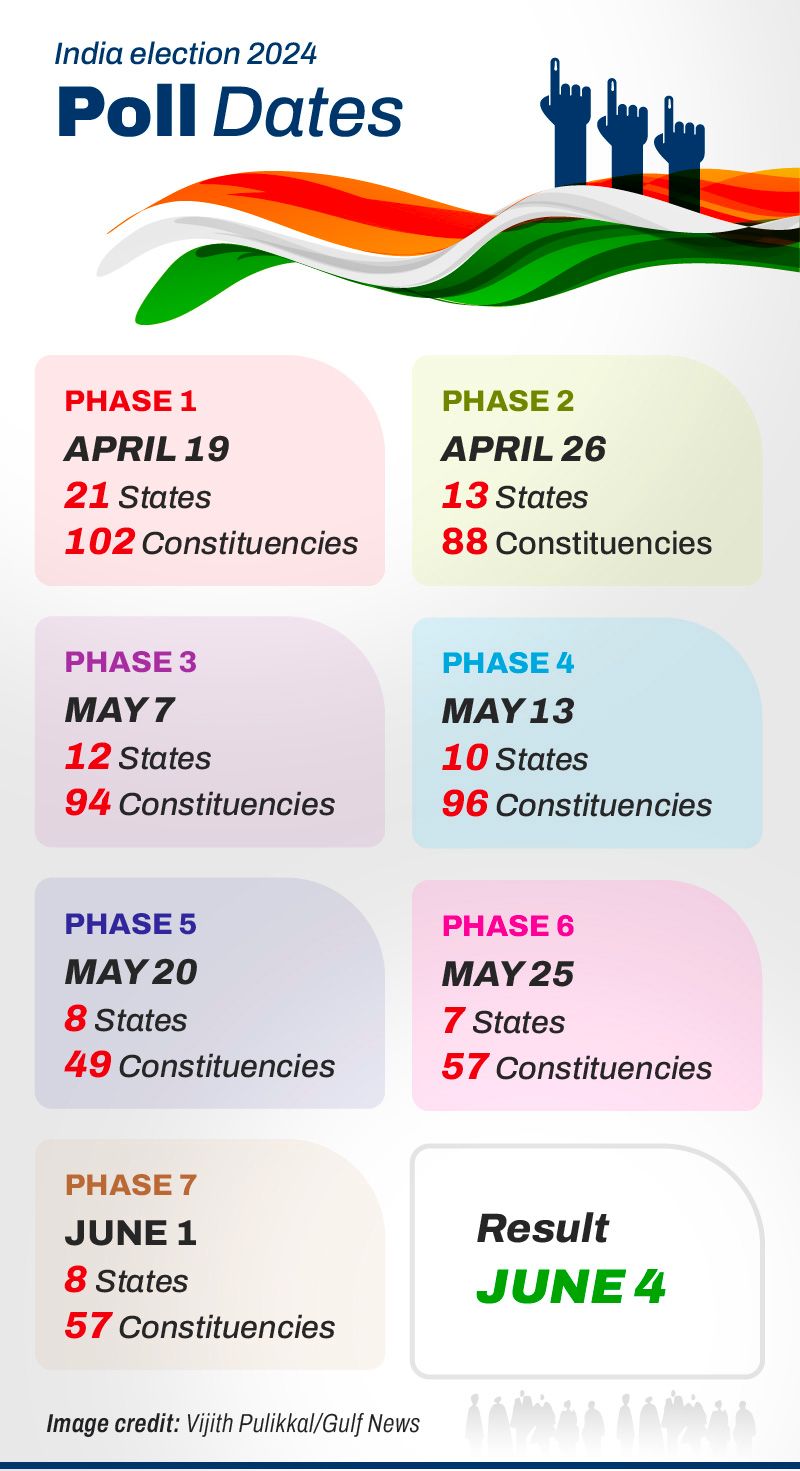
Votes will be counted on June 4 after polling is done on April 19, April 26, May 7, May 13, May 20, May 25 and June 1.
While some states will cast their ballots in a day, voting elsewhere may take longer. Uttar Pradesh, the largest state the size of Brazil with 200 million people, will vote on all seven days.
The staggered polling enables India’s election commission to deploy security personnel who ensure the safety and freedom of electoral officials transporting the voting machines.
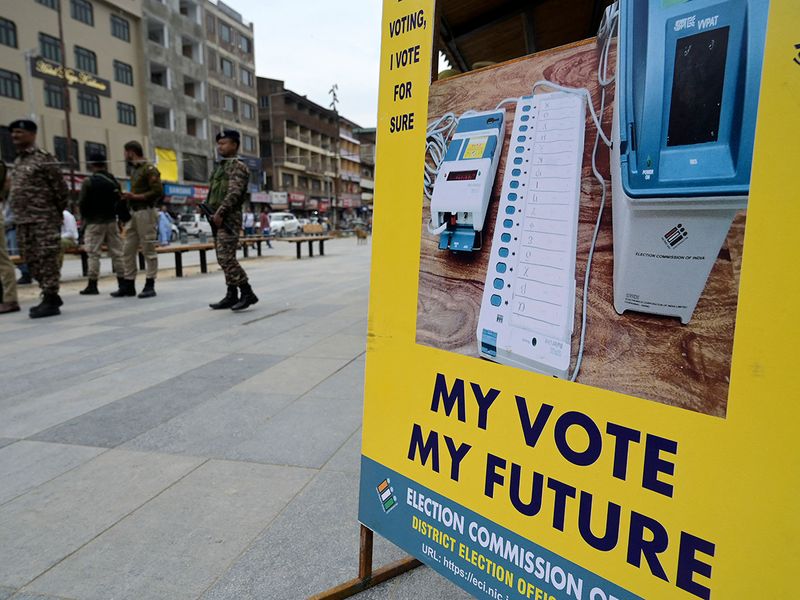
WHO IS ELIGIBLE TO VOTE?
All Indian citizens aged 18 and above are eligible to vote.
Turnout during the last national elections was more than 67 per cent, with nearly 615 million people casting a ballot.
India uses electronic voting machines which allow for faster counting of ballots.

WHO IS ELIGIBLE TO CONTEST THE POLLS?
In order to be a member of the Lok Sabha a person must be a citizen of India and not less than 25 years of age.
WHEN WILL WE KNOW WHO HAS WON?
Publication of exit poll data while an election is in progress is illegal under Indian law. Any indication of which way the vote is trending will only come after the last phase of voting concludes on June 1.
272 seats
is needed for a party to stake claim to form the government.Formal ballot counting begins three days later on June 4 and the use of electronic voting machines means that tallying will be quick. Results should be announced the same day.
WHO IS ALLOWED TO FORM THE GOVERNMENT?
India has a multiparty parliamentary system with a bicameral legislature.
India follows the first-past-the-post system, where voters cast a vote for a single candidate in a constituency and the candidate with the most votes wins the seat.
1.12 million
electronic voting machines will be used during the elections.The party with a simple majority of 272 or more seats in the lower house (Lok Sabha) is invited to form the government with its choice of prime minister.
If no single party reaches that mark, the president will ask the biggest party to try to put together a coalition.
The term of a government is five years.
IS THE PRIME MINISTER ELECTED?
The Prime Minister is not directly elected by the people, rather he or she is appointed by the President. The leader of the political party that secures a majority in the Lok Sabha is appointed as the Prime Minister of the country.
The President may appoint a person as the Prime Minister who is not a member of either of the two houses of Parliament. In such a case, the selected candidate must become a member of either the Lok Sabha or the Rajya Sabha (Upper House) within a period of six months.
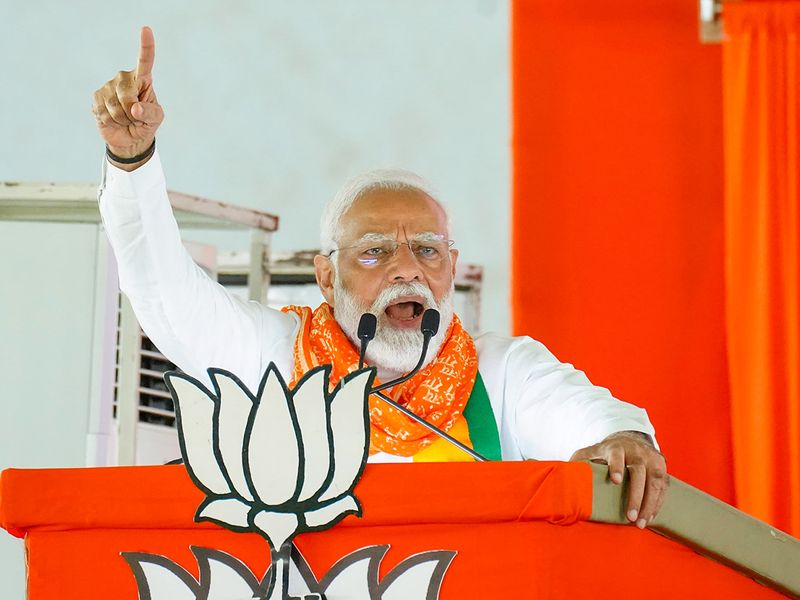
WHAT ARE THE MAIN BLOCS FIGHTING THE POLLS?
There are 2,660 political parties in India.
The election pits two-term Prime Minister Narendra Modi’s BJP and its regional allies against an alliance of two dozen opposition parties.
A victory would make Modi, 73, only the second prime minister after Jawaharlal Nehru, India’s first prime minister, to win a third straight term.
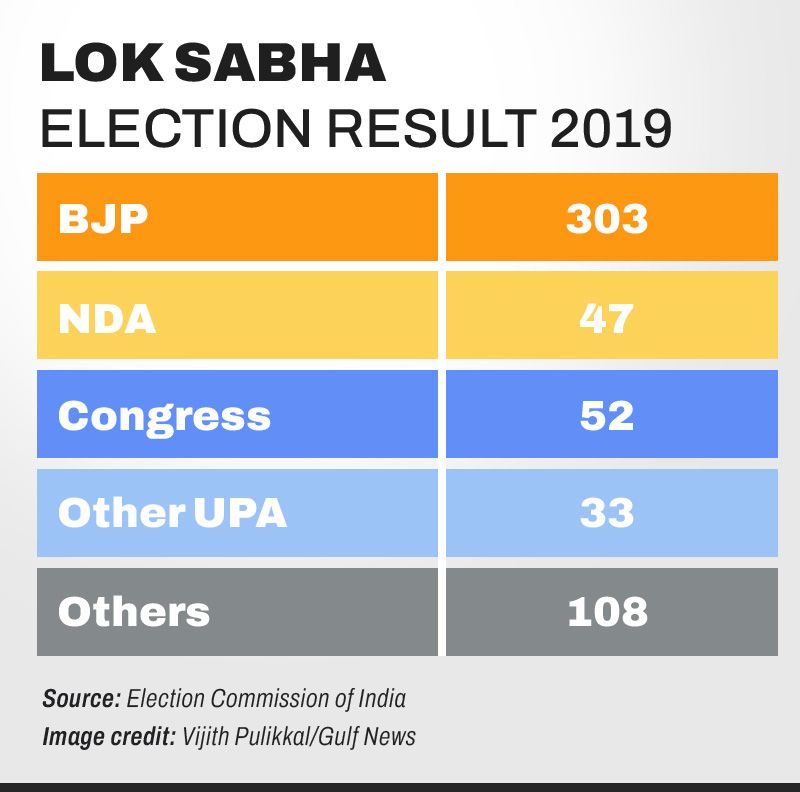
Modi has set a target of 370 seats for BJP and 400-plus for the National Democratic Alliance (NDA) it heads in the Lok Sabha.
The BJP won 303 seats last time, followed by 52 for the main opposition Indian National Congress (INC).
The BJP will be challenged by an alliance of some two-dozen opposition parties led by Congress party called INDIA or the Indian National Developmental Inclusive Alliance.
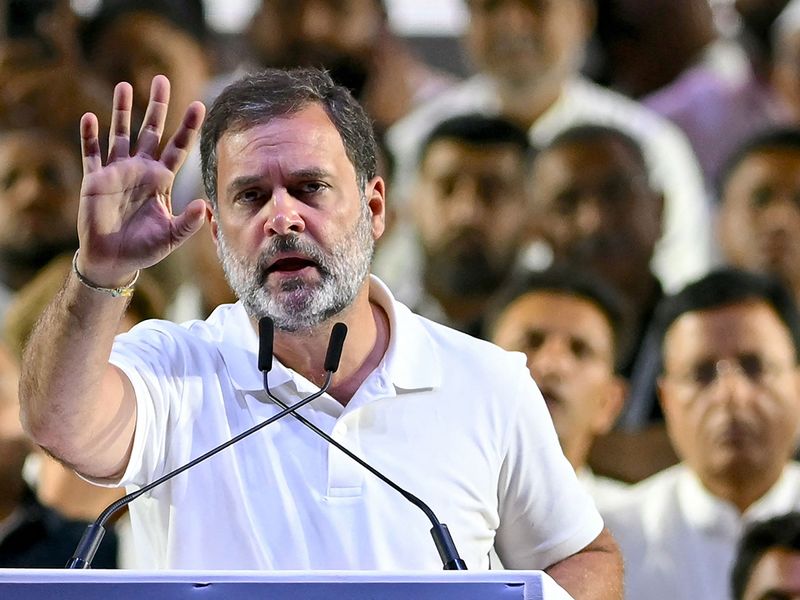
The Congress, which has ruled India for 54 of its 76 years since independence from Britain, is highlighting unemployment, rural distress, the need for more affirmative action for the so-called backward castes and the need to end religious polarisation.
Independent candidates are also contesting the elections.
DO THE STATES HAVE EQUAL NUMBER OF SEATS?
Each state is allotted seats in the Lok Sabha in such a manner that the ratio between that number and its population is as close to uniform as possible. This provision does not apply to states having a population of less than 6 million. So, some states have more seats than others because they have larger populations. For example, Uttar Pradesh has 80 seats, Maharashtra 48, West Bengal 42, Bihar 40 and Tamil Nadu 39. On the other hand, states like Nagaland and Sikkim only have one seat each in the Lok Sabha.
WILL ELECTIONS ALSO BE HELD FOR STATE ASSEMBLIES?
Simultaneous election for Lok Sabha and assembly will be held in four states - Sikkim, Odisha, Arunachal Pradesh and Andhra Pradesh.
By-elections will also be held for 26 assembly seats across multiple states, including Bihar, Gujarat, Haryana, Jharkhand, Maharashtra, Rajasthan and Tamil Nadu.
WHO OVERSEES THE POLLS?
The Election Commission of India oversees the vote and makes sure there is a voting booth available within 2 kilometers of every voter. There are 1.2 million polling stations across the country.
Some 15 million election officials and security staff will cover the country’s deserts and mountains — sometimes by boat, foot and even on horseback — to try to reach every voter.
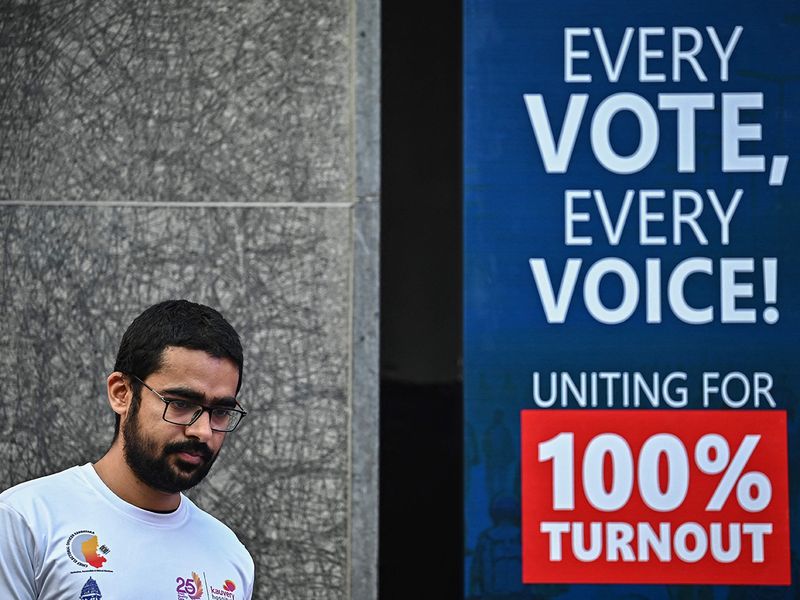
In 2019, when India last held elections, a team of polling officers trekked more than 480 kilometres for four days so that a single voter in a hamlet in the remote state of Arunachal Pradesh could exercise the right to vote.
Officials also travelled to a village high up in the Himalayas in 2019 to install a booth at 15,256 feet (4,650 metres), the highest polling station anywhere in the world.
This time too, polling stations will be installed in remote places, including one inside a wildlife sanctuary in Kerala and another in a shipping container in Gujarat.
Tens of thousands of federal security forces are freed up and deployed alongside state police to prevent violence and transport electoral officials and voting machines.
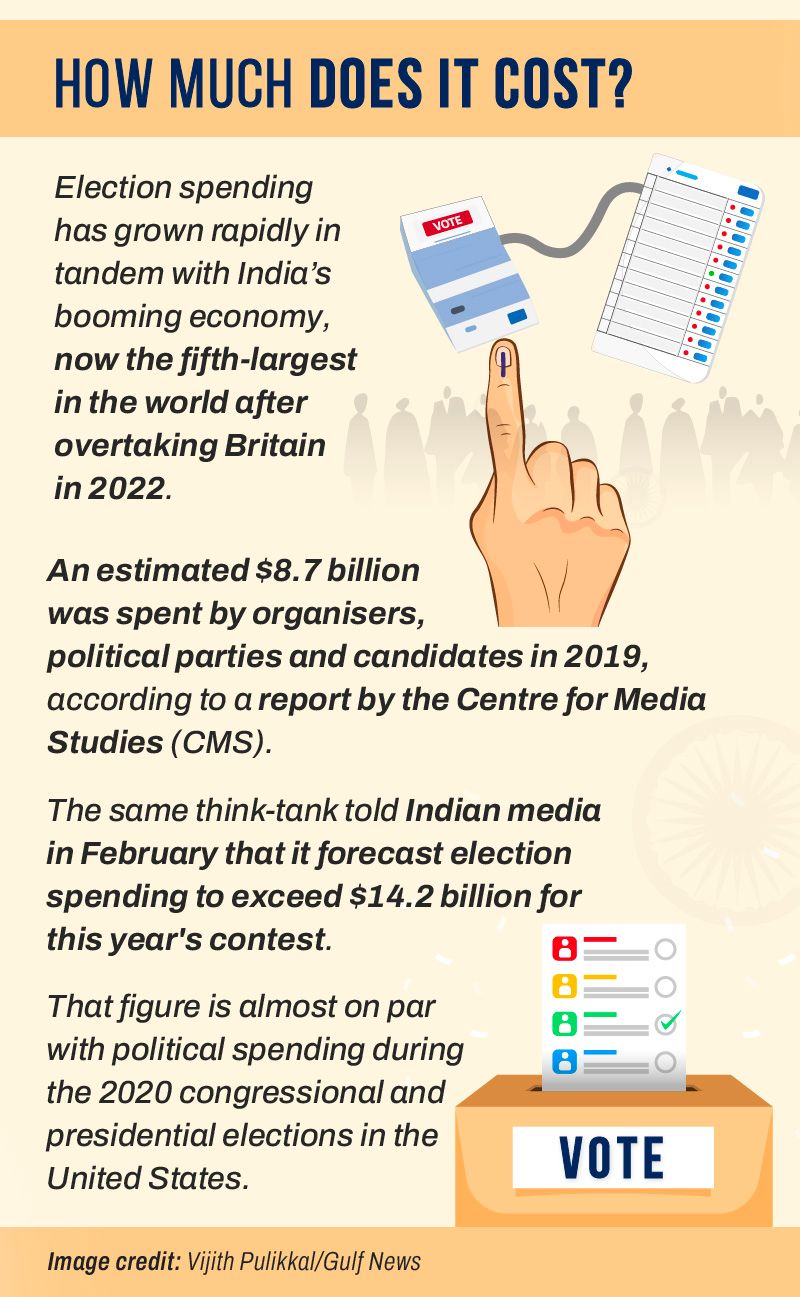
WHEN DID INDIA START USING ELECTRONIC VOTING MACHINES?
EVMs were first used in India for a by-election to the Parur assembly seat of Kerala in 1982. It was deployed widely in the country from 2000. The 2004 Lok Sabha election was conducted entirely on EVMs.
They have made voting simpler for millions of people, especially when busy polling stations can serve up to 12,000 people on voting day.
The machines are more portable and lighter than traditional ballot boxes. Each machine consists of a “control unit” that tallies and stores votes; “balloting units” with buttons that voters press; and a printer that creates a paper trail.
They also come with special carrying cases that make them easy to pack.
- With inputs from agencies


